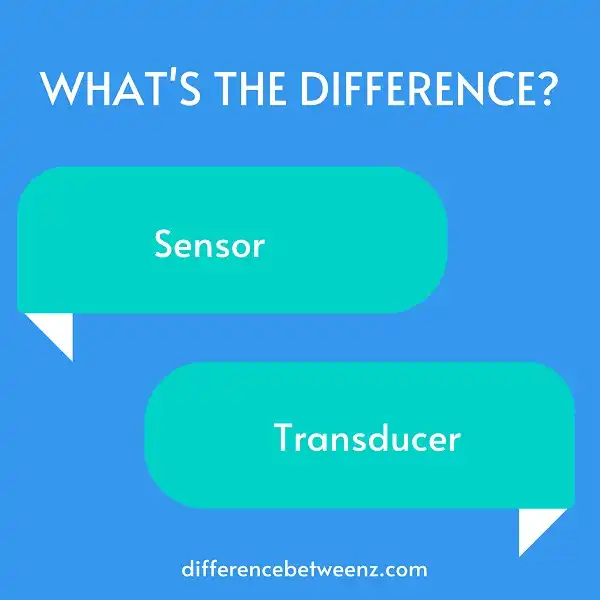A sensor and a transducer are two different devices that are often confused. A sensor is simply a device that measures a physical quantity, such as acceleration, pressure, or temperature. A transducer is a device that converts one form of energy into another. For example, a microphone is a transducer that converts sound into electrical energy. In this blog post, we will discuss the differences between sensors and transducers and provide some examples of each. We will also explore how they are used in various applications.
What is a Sensor?
A sensor is a device that detects or measures a physical property and converts it into a signal which can be read by an observer or by an instrument. Sensors are used in many different industries, including automotive, manufacturing, aerospace, and process control. There are many different types of sensors, each of which is designed to measure a specific physical property. Some common examples include temperature sensors, pressure sensors, flow sensors, and level sensors. Sensor data can be used to monitor and control processes, as well as to detect faults or irregularities. In some cases, sensors may also be used for safety purposes, such as in fire detectors and smoke alarms.
What is a Transducer?
- A transducer is a device that converts energy from one form to another. Transducers are used in a variety of applications, including sensors, microphones, and loudspeakers. In general, transducers can be classified as either active or passive.
- Active transducers contain an internal power source, such as a battery, which is used to increase the amplitude of the output signal. Passive transducers, on the other hand, do not have an internal power source and rely on the amplitude of the input signal to generate the output signal.
- Transducers can also be classified based on the type of energy they convert. For example, there are electrical-to-mechanical transducers (such as motors and solenoids), optical-to-electrical transducers (such as photodiodes and phototransistors), and piezoelectric transducers (which convert between electricity and pressure/vibration).
Differences between a Sensor and a Transducer
Sensor and transducers are two words that are often used interchangeably, but they actually refer to two different types of devices. A sensor is a device that detects a physical quantity and converts it into a corresponding electrical signal.
- On the other hand, a transducer is a device that converts one form of energy into another. So, while all transducers are sensors, not all sensors are transducers. The most common type of sensor is the photodetector, which converts light into an electrical signal.
- Other examples of sensors include thermocouples, strain gauges, and piezoelectric crystals. Transducers, on the other hand, can include devices such as microphones, loudspeakers, and electromechanical relays.
- While sensors simply convert physical quantities into electrical signals, transducers can actually generate new forms of energy based on the input signal. As a result, transducers are generally more complex devices than sensors.
Conclusion
Sensors and transducers are two different types of devices that both have a role in converting one type of energy into another. While they may seem similar, there are some key differences between the two that you should be aware of when selecting the right device for your needs. We hope this article has helped to clear up any confusion and given you a better understanding of what each type of device can offer.


